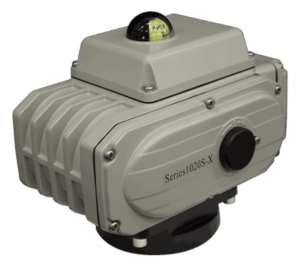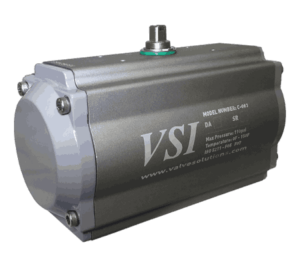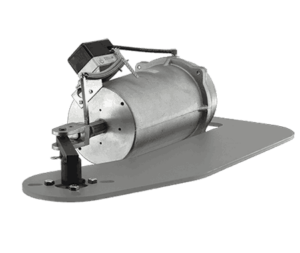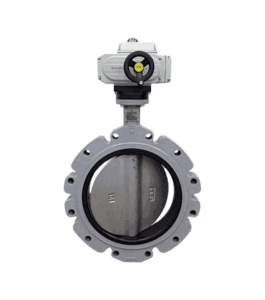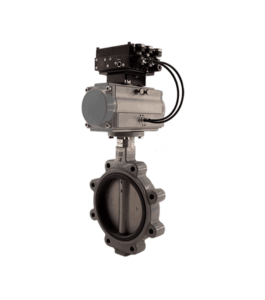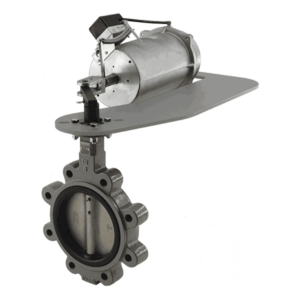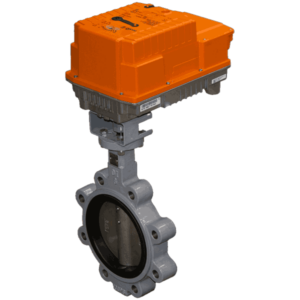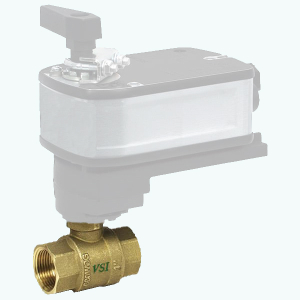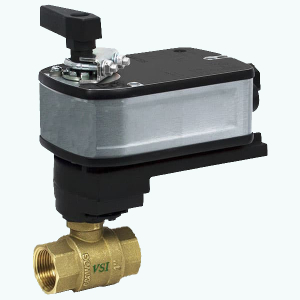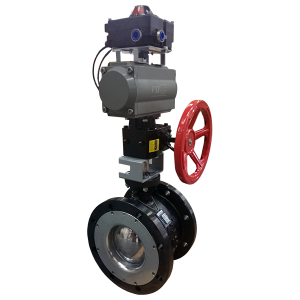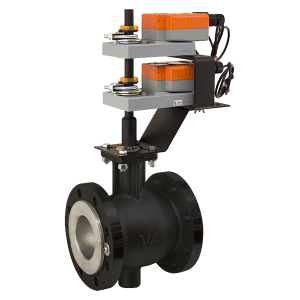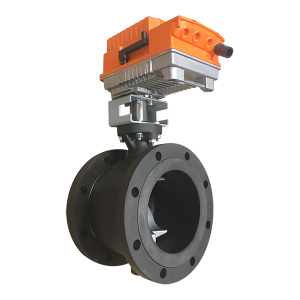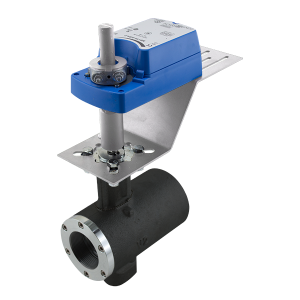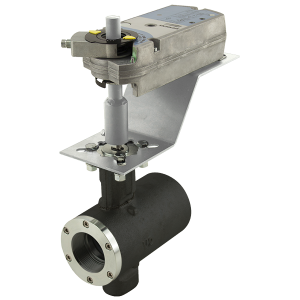Why Are Automated Butterfly Valves Essential for Modern Flow Control Systems?
Introduction to Automated Butterfly Valves
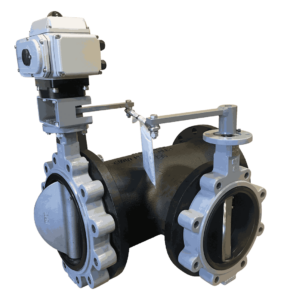 |
What Are Automated Butterfly ValvesAutomated butterfly valves are a critical component in flow control systems, used to regulate the flow of liquids, gases, or slurries in various industrial processes. These valves consist of a rotating disc, often referred to as the “butterfly,” which pivots to open or close the flow path. When actuated, either pneumatically, electrically, or hydraulically, the disc rotates 90 degrees, regulating flow based on the actuator’s signal. This mechanism enables automated, efficient, and precise control over the flow, whether for on/off operations or more nuanced modulation. In essence, automated butterfly valves allow for quick and reliable flow control, making them an essential part of modern industrial systems. The automation process eliminates the need for manual intervention, enhancing the accuracy and reliability of operations. Moreover, these valves are vital for reducing operational downtime and improving system performance in environments that demand precision. |
|
Why Automated Butterfly Valves Are Crucial in Modern Industry Automated butterfly valves play a vital role in regulating the flow of liquids, gases, and slurries across a wide range of industrial systems. Unlike manual valves, these devices use pneumatic, electric, or hydraulic actuators to rotate a disc (the “butterfly”) precisely, allowing for fast, reliable, and programmable control. Their ability to integrate with SCADA and PLC systems means operators can manage processes remotely, respond to changing conditions in real time, and reduce the need for manual intervention. This automation not only improves accuracy and efficiency but also enhances safety and reduces downtime. As industries demand more intelligent, interconnected systems, automated butterfly valves have evolved from simple mechanical devices to smart control components—ensuring consistent performance in everything from water treatment to chemical processing. Their speed, reliability, and seamless integration into control systems make them indispensable in today’s automated environments. |
Evolution from Manual to Automated Systems
Initially, butterfly valves were operated manually, requiring direct human intervention. However, as industries adopted automation, the need for remote and precise control increased. Today, automated butterfly valves integrate seamlessly with SCADA (Supervisory Control and Data Acquisition) and PLC (Programmable Logic Controller) systems.
- SCADA enables centralized monitoring and control of entire industrial processes, allowing operators to oversee multiple valves and equipment remotely.
- PLCs are specialized industrial computers that execute automated commands, ensuring valves respond to system requirements in real time without human intervention.
This shift towards automation has significantly improved efficiency, reduced labor costs, and enhanced safety across various industries.
Key Benefits of Automated Butterfly Valves
 |
 |
 |
 |
Versatility Across Industries |
Improved Efficiency and Reliability |
Seamless Integration with Automated Systems |
Cost-Effectiveness |
Working Principle of Automated Butterfly Valves
Basic DesignA butterfly valve comprises a valve body with a central rotating disc mounted on a shaft. The disc’s position determines the flow of the medium passing through the valve. In the closed position, the disc blocks the flow by being perpendicular to the pipeline’s axis, creating a tight seal that prevents leakage. When the valve is open, the disc aligns with the flow direction, allowing the passage of fluids or gases with minimal resistance. This design enables quick opening and closing, making butterfly valves ideal for applications requiring fast response times. Additionally, their simple structure results in fewer components, reducing maintenance needs and lowering the risk of mechanical failure. Their compact and lightweight nature allows for easy installation, even in space-constrained environments. The valve’s versatility, combined with its efficient flow control, makes it one of the most cost-effective and widely used options across industries such as water treatment, HVAC, chemical processing, and oil and gas. |
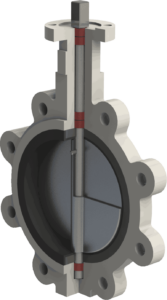 |
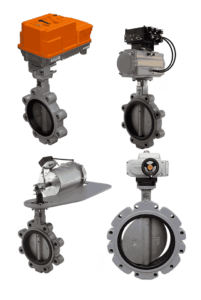 |
Role of ActuatorsActuators play a crucial role in automating the butterfly valve, providing the necessary force to rotate the valve’s disc and regulate flow with precision. Without an actuator, valve operation would require manual effort, leading to inefficiencies and potential inconsistencies in flow control. Actuators come in different types, such as pneumatic, electric, and hydraulic, each offering specific advantages depending on the application. Pneumatic actuators are known for their fast response time and reliability, making them ideal for applications requiring quick open/close actions, such as emergency shutdown systems. Electric actuators provide precise control and are commonly used in automated systems that require gradual flow adjustments, such as in HVAC and water treatment applications. Hydraulic actuators, on the other hand, are best suited for high-pressure environments where additional force is needed to operate the valve efficiently. The actuator’s job is to move the valve’s disc accurately and consistently, either automatically or remotely, ensuring that flow control is maintained without the need for manual intervention. By integrating with automation systems like SCADA and PLC, actuators enable real-time monitoring and control, improving process efficiency, reducing operational costs, and enhancing overall system reliability. |
Types of Actuators Used in Automated Butterfly Valves
Applications of Automated Butterfly Valves
- Water and Wastewater Treatment: Automated butterfly valves are integral to water and wastewater treatment systems. They regulate the flow of water through filtration systems, chemical dosing processes, and wastewater management. The precision they offer ensures optimal water quality is maintained, helping facilities meet stringent environmental regulations. Whether controlling clean water or treating wastewater, these valves ensure that the process runs efficiently, minimizing waste and conserving energy.
- HVAC Systems: In HVAC (Heating, Ventilation, and Air Conditioning) systems, automated butterfly valves are used to manage airflow, maintain pressure, and regulate temperature in ducts and pipes. These valves help optimize the efficiency of the HVAC system by ensuring that air and fluid flow is adjusted according to the system’s demand, whether in industrial or residential settings. Their ability to handle both water and air makes them versatile components in HVAC applications.
- Oil and Gas Industry: In the oil and gas industry, automated butterfly valves control the flow of crude oil, natural gas, and refined products throughout pipelines. These valves are designed to withstand high-pressure and high-temperature conditions, ensuring that the flow of materials remains regulated and safe. Automated butterfly valves are used across both upstream and downstream operations, providing quick shut-off capabilities to minimize risk in hazardous situations, such as during leaks or maintenance.
- Food and Beverage Processing: In food and beverage manufacturing, automated butterfly valves are used to control the flow of ingredients, fluids, and gases during production processes such as pasteurization, bottling, and mixing. These valves are designed to meet stringent sanitary standards, ensuring that the flow control does not interfere with food safety. Their easy maintenance and ability to provide precise control over the flow make them a staple in this highly regulated industry.
- Chemical Manufacturing: In chemical manufacturing, where corrosive and hazardous fluids are common, automated butterfly valves offer a reliable and safe solution for flow control. These valves are capable of handling aggressive chemicals, high temperatures, and abrasive materials without compromising performance. Stainless steel or plastic linings are often used to ensure the valve’s longevity and effectiveness in these demanding applications.
Advantages of Implementing Automated Butterfly Valves
- Compact and Lightweight Design: One of the significant advantages of automated butterfly valves is their compact and lightweight nature. These valves occupy less space compared to other valve types, making them easier to install in confined spaces. Their lightweight design also reduces the need for heavy mounting structures, resulting in lower installation and maintenance costs.
- Cost-Effectiveness: Automated butterfly valves are generally more affordable than other valve types, such as ball or gate valves. Their straightforward design and efficient use of materials contribute to their cost-effectiveness. Additionally, the automation of these valves reduces labor costs, as remote operation eliminates the need for manual valve adjustments. Long-term savings are also realized through reduced maintenance and enhanced system reliability.
- Efficient Flow Control: Automated butterfly valves are designed to provide precise flow control with minimal pressure drop. This efficiency helps save energy, as less power is required to maintain the desired flow. These valves excel in both modulating and on/off applications, making them suitable for high-flow systems and applications that demand consistent flow regulation.
- Integration with Automated Systems: Another significant benefit of automated butterfly valves is their ability to integrate seamlessly with SCADA and PLC systems. This integration allows for centralized monitoring and control of multiple valves within a process system. Real-time feedback ensures that system operators can quickly identify any performance issues, optimizing operations and ensuring safety. Automation reduces the likelihood of human error, leading to smoother, more efficient processes.
In conclusion, automated butterfly valves have become a fundamental component of modern flow control systems, offering unmatched efficiency, reliability, and adaptability across industries. Their ability to provide precise flow regulation, integrate seamlessly with automation systems, and minimize operational costs makes them an indispensable choice for industries ranging from water treatment to oil and gas.
The evolution from manual to automated valves has transformed industrial operations, reducing human intervention while improving accuracy and safety. With options like pneumatic, electric, and hydraulic actuators, these valves cater to a wide range of operational needs, whether it’s rapid shut-off in emergency scenarios or fine-tuned modulation in sensitive processes. Their compact design, cost-effectiveness, and ease of integration with SCADA and PLC systems further enhance their value.
As industries continue to prioritize efficiency and automation, automated butterfly valves will remain at the forefront of fluid control solutions. Their role in optimizing energy usage, ensuring regulatory compliance, and enhancing system reliability underscores their significance in today’s fast-paced, technology-driven environment. Investing in automated butterfly valves is not just about improving flow control—it’s about future-proofing operations for increased productivity, safety, and long-term success.

